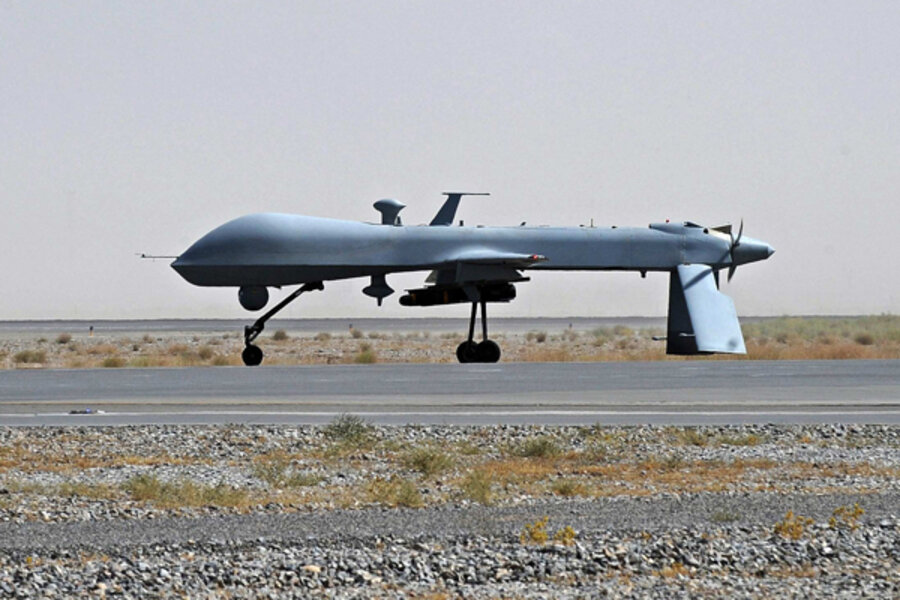US drone strikes in Pakistan on rise again
• A daily summary of global reports on security issues.
A US drone strike killed a senior militant in northwestern Pakistan today, one of two drone attacks on suspected militants this week.
Pakistani intelligence officials and Pakistani Taliban members told Reuters that the strike in the town of Miran Shah killed Bador Mansoor, a leader of a faction of the Pakistani Taliban with close ties to Al Qaeda. At least three others were killed in the strike, which came on the heels of a strike yesterday that killed 10 people.
Mr. Mansoor led a group of more than 200 Pakistani Taliban fighters in North Waziristan (see map here), a key sanctuary for militants, an insurgent told the Associated Press. Intelligence officials said they could not confirm for the AP that Mansoor was among those killed in the strike on Miran Shah’s bazaar.
Agence France-Presse reports that Pakistani intelligence described Mansoor as “de facto leader of Al Qaeda in Pakistan” since his predecessor, Ilyas Kashmiri, was killed in a strike last June.
Drone attacks seem to be occurring more regularly since the resumption of the campaign on Jan. 10 after a nearly two-month hiatus. Drone operations were halted temporarily after a NATO airstrike mistakenly targeted a Pakistani military outpost in November, killed 24 Pakistani soldiers and infuriating Pakistan.
President Barack Obama openly acknowledged the drone program – dubbed the “worst kept secret in Pakistan and Washington” – after the campaign resumed. However, it has been obvious for years that the US has been behind the strikes in Pakistan’s semi-autonomous tribal region, which butts against the Afghan border.
Amid the drone strikes, the Pakistani Army, NATO, and Afghan Army met yesterday to discuss coordination along the border – a sign of improving relations between the US and Pakistan, the Associated Press reports. Pakistan has indicated it is willing to reopen the border to NATO supply trucks. The border has been closed since the November airstrike.
The Associated Press reports that for most of the war in Afghanistan, 90 percent of NATO supplies came to Afghanistan via Pakistan, but in the last couple years NATO began shifting many of its shipments to an alternate route is more expensive and takes longer, but avoids Pakistan. Before the November strike, about 30 percent of “nonlethal” supplies for troops came through Pakistan, according to AP.
Gen. James Mattis, head of the US Army’s Central Command, is expected to travel to Pakistan later this month to meet with the Pakistani Army Chief of Staff, Gen. Ashfaq Parvez Kayani. He will be the first high-level US official to visit Pakistan since the November strike, The New York Times reports.
Although outward signs are just now appearing, relations have been warming for months, although the countries’ relationship will be more narrowly defined after the tumultuous diplomatic battle of the past year, according to the Times.
Intelligence officials from the two countries have resumed discussions about “joint targeting,” officials here added — probably a reference to C.I.A.-directed drone strikes in Pakistan’s tribal belt. On the military side, Pakistan’s generals had started discussions over border coordination and the resumption of Coalition Support Funds, the main United States subsidy to Pakistani military operations.
A senior Pakistani security official also struck a cautiously positive note. “We have to meet, we have to talk, we have to bring this relationship back on track,” he said. “Both of us need each other. But from now on there will be no free rides, no carte blanche — things need to be institutionalized.”





